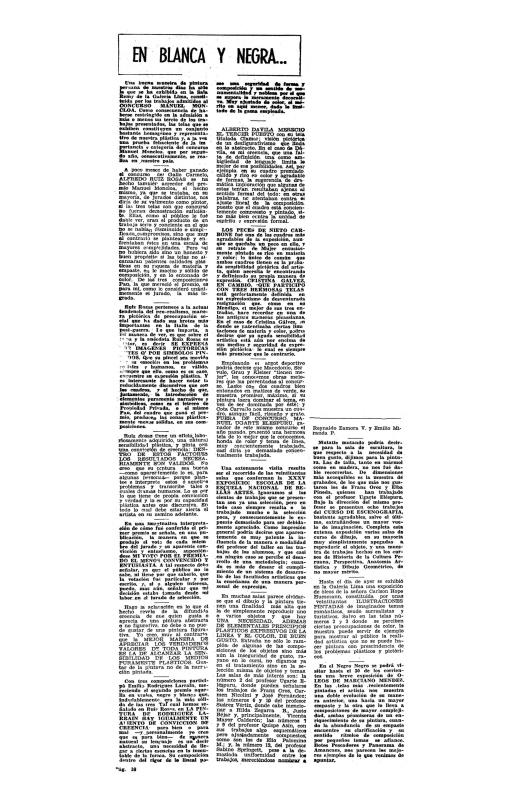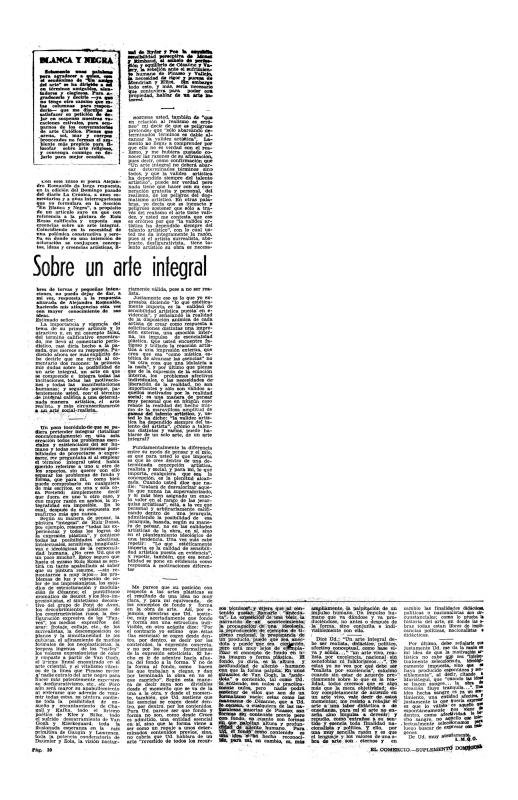This review by writer and art critic Sebastián Salazar Bondy (1924-64) describes the III Salón Moncloa as poor, “both in imagination and technique.”
In 1955, painter Fernando de Szyszlo (b. 1925) won first prize at the III Salón de Pintura Manual Moncloa, which eventually became the most important [competition] within the Peruvian arts scene. Szyszlo had played a key role in the defense and dissemination of abstract art since his return to Lima (in 1951), both through his own work and his contentious zeal, which sparked debate [within the nation] (see the ICAA digital archive article “Dice Fernando Syszlo que no hay pintores en el Perú ni América: el joven pintor peruano declara sentir su pintura y la de los demás pero no puede explicarla” (no author) (doc. no. 1137793)]. The success of “non-figurative” art shows its growing importance within the Lima arts scene, especially considering that the previous year’s prize had been awarded to Alfredo Ruiz Rosas (1926-2002), a painter of the social realism trend. This was another event that marked the era, and one that generated its own debate.
[For more on this topic, see the following: by Manuel Jesus Orbegozo, “Un ‘pan’ común, de todos los días, amasado por Alfredo Ruiz Rosas, ganó diez mil soles” (doc. no. 859785); by Luis Miró Quesada Garland , “En blanca y negra…” (doc. no. 859805), “En blanca y negra” (doc. no. 859826), “Sobre un arte integral” (doc. no. 1227195), and “Sobre un arte integral” (doc. no. 859917); by Alejandro Romualdo Valle, “Sobre un arte integral (respuesta al arquitecto Luis Miró Quesada G.) (doc. no. 1227139), “Sobre un arte integral: punto final” (doc. no. 1227176), as well as “Ruiz Rosas y un arte integral” (doc. no. 1227027)]. Although figurative artists had boycotted the III Salón Moncloa, the higher participation by abstract artists is evidence of the trend’s triumph among the young artists, a fact later confirmed by the I Salón de Arte Abstracto in 1958.









